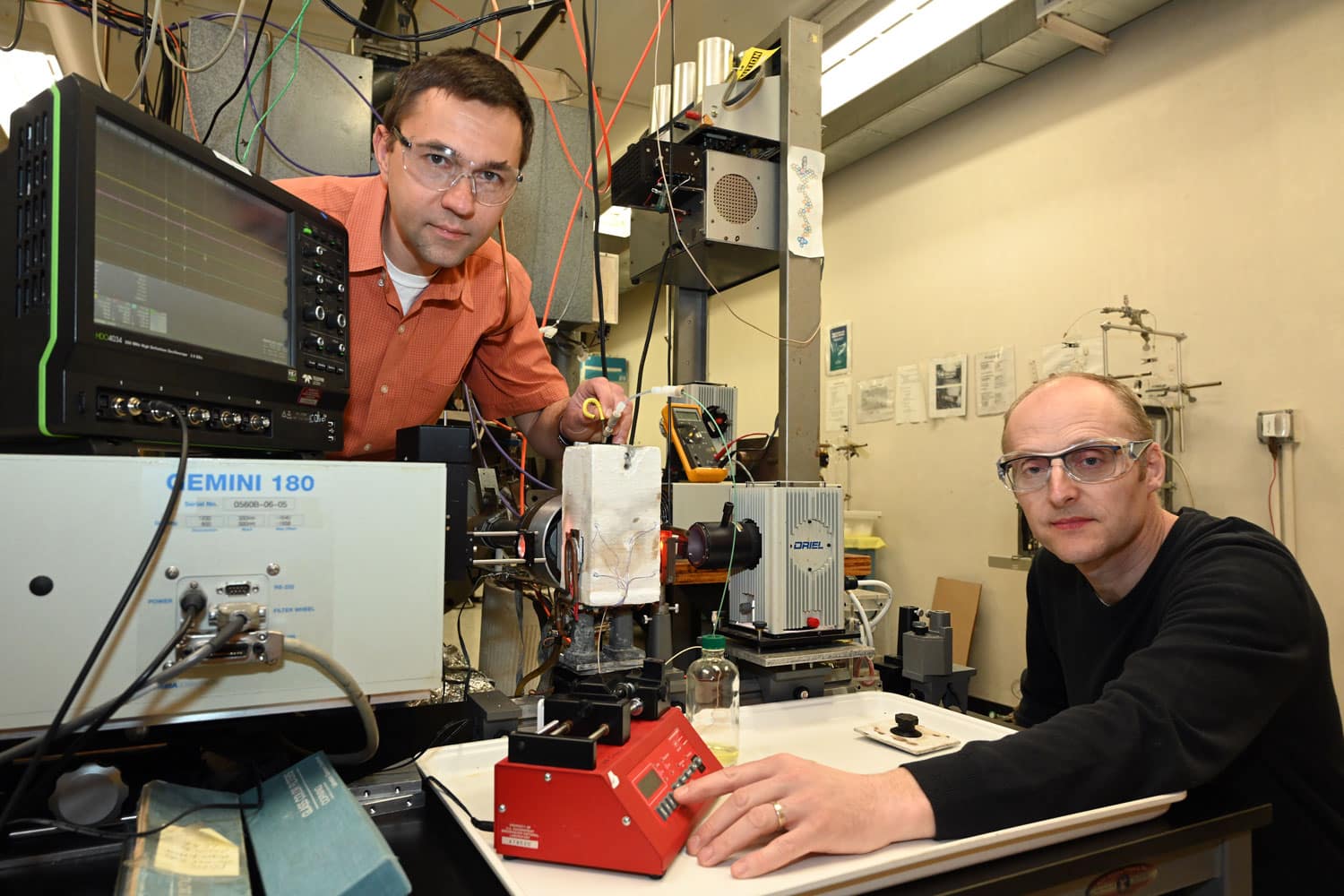
Hydrogen is a clean fuel that could revolutionize the energy industry. However, accessing hydrogen is a complex process. But if researchers can develop a chemical catalyst that can separate the hydrogen and oxygen in water molecules, they can manufacture pure hydrogen using renewable energy sources like solar power.
Now, chemists at the University of Kansas and the U.S. Department of Energy’s (DOE) Brookhaven National Laboratory have unraveled the entire reaction mechanism for a key class of water-splitting catalysts. Understanding the complete catalytic cycle is rare as the reactions go through many steps, some very fast and cannot be easily observed.
While studying possible candidates, associate professor James Blakemore from the University of Kansas noticed something unusual about the pentamethylcyclopentadienyl rhodium complex, or Cp*Rh complex. This catalyst demonstrated reactivity in an area where molecules are usually stable.
Blakemore said, “Metal complexes—molecules that contain a metal center surrounded by an organic scaffold—are important for their ability to catalyze otherwise difficult reactions. Typically, reactivity happens directly at the metal center, but in our system of interest, the ligand scaffold appeared to participate in the chemistry directly.”
To determine- what exactly was reacting with the ligand? Was the team observing an active step in the reaction mechanism or just an undesirable side reaction? How stable were the intermediate products that were produced?- scientists used a pulse radiolysis technique that harnesses particle accelerators’ power to isolate rapid, hard-to-observe steps within a catalytic cycle.
Brookhaven chemist David Grills, another paper co-author, said, “We accelerate electrons, which carry significant energy, to very high velocities. When these electrons pass through the chemical solution we’re studying, they ionize the solvent molecules, generating charged species that are intercepted by the catalyst molecules, which rapidly alter in structure. We then use time-resolved spectroscopy tools to monitor the chemical reactivity after this rapid change occurs.”
Brookhaven chemist Dmitry Polyansky said, “Pulse radiolysis allows us to single out one step and look at it quickly. Our instrumentation can resolve events at one millionth to one billionth of a second.”
The team understood each stage of the intricate catalytic cycle, including the specifics of the peculiar reactivity occurring at the ligand scaffold, by combining pulse radiolysis and time-resolved spectroscopy with more typical electrochemistry and stopped-flow approaches.
One of the most remarkable features of this catalytic cycle was the direct involvement of the ligands.
Grills said, “We were able to show that a hydride group, an intermediate product of the reaction, jumped onto the Cp* ligand. This proved that the Cp* ligand was an active part of the reaction mechanism.”
Scientists will find it much simpler to create more effective, stable, and economical catalysts when these specific chemical characteristics are captured.
According to scientists, their findings could offer clues for understanding reaction mechanisms for other catalysts.
Journal Reference:
- Wade Henke, Yun Peng, et al. Mechanistic roles of metal- and ligand-protonated species in hydrogen evolution with [Cp*Rh] complexes. PNAS. Link.

0 Comments :
Post a Comment